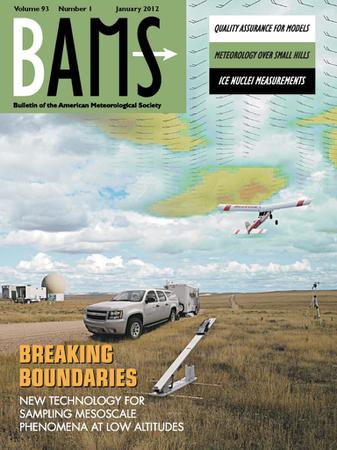美国究竟遭受了多少雷击?
IF 5.9
1区 地球科学
Q1 METEOROLOGY & ATMOSPHERIC SCIENCES
引用次数: 0
摘要
摘要 据估计,美国毗连地区(CONUS)上空的云地(CG)闪烁次数每年少则 2,500 万次,多则 4,000 万次。此外,许多 "云对地 "闪光不止在一个地方与地面接触。为了澄清这些数值,我们研究了国家雷电探测网络(NLDN)的最新数据,因为该网络运行良好,足以对 CG 闪光灯的数量及其相关地面接触点进行精确更新。根据计算,美国全国范围内 CG 闪光灯的平均数量为每年约 2,340 万次,而地面接触点的平均数量为每年 3,680 万个。了解这两个参数对雷电防护标准至关重要,同时还能更好地了解雷电对森林火灾诱发、地球物理相互作用、人类安全以及应用的影响。我们还进行了敏感性测试,以评估 CG 闪电和云内 (IC) 闪电分类错误的影响,从而为这些估计值设定界限;可能的不确定性为百分之几。本文章由计算机程序翻译,如有差异,请以英文原文为准。
How Much Lightning Actually Strikes the United States?
Abstract The number of cloud-to-ground (CG) flashes over the contiguous U.S. (CONUS) has been estimated to be from as small as 25 million per year to as many as 40 million. In addition, many CG flashes contact the ground in more than one place. To clarify these values, recent data from the National Lightning Detection Network (NLDN) have been examined since the network is performing well enough to make precise updates to the number of CG flashes and their associated ground contact points. The average number of CG flashes is calculated to be about 23.4 million per year over CONUS, and the average number of ground contact points is calculated as 36.8 million per year. Knowledge of these two parameters is critical to lightning protection standards, as well as better understanding of the effects of lightning on forest fire initiation, geophysical interactions, human safety, and applications that benefit from knowing that a single flash may transfer charge to ground in multiple, widely-spaced locations. Sensitivity tests to assess the effects of misclassification of CG and in-cloud (IC) lightning are also made to place bounds on these estimates; and the likely uncertainty is a few percent.
求助全文
通过发布文献求助,成功后即可免费获取论文全文。
去求助
来源期刊
CiteScore
9.80
自引率
6.20%
发文量
231
审稿时长
6-12 weeks
期刊介绍:
The Bulletin of the American Meteorological Society (BAMS) is the flagship magazine of AMS and publishes articles of interest and significance for the weather, water, and climate community as well as news, editorials, and reviews for AMS members.

 求助内容:
求助内容: 应助结果提醒方式:
应助结果提醒方式:


